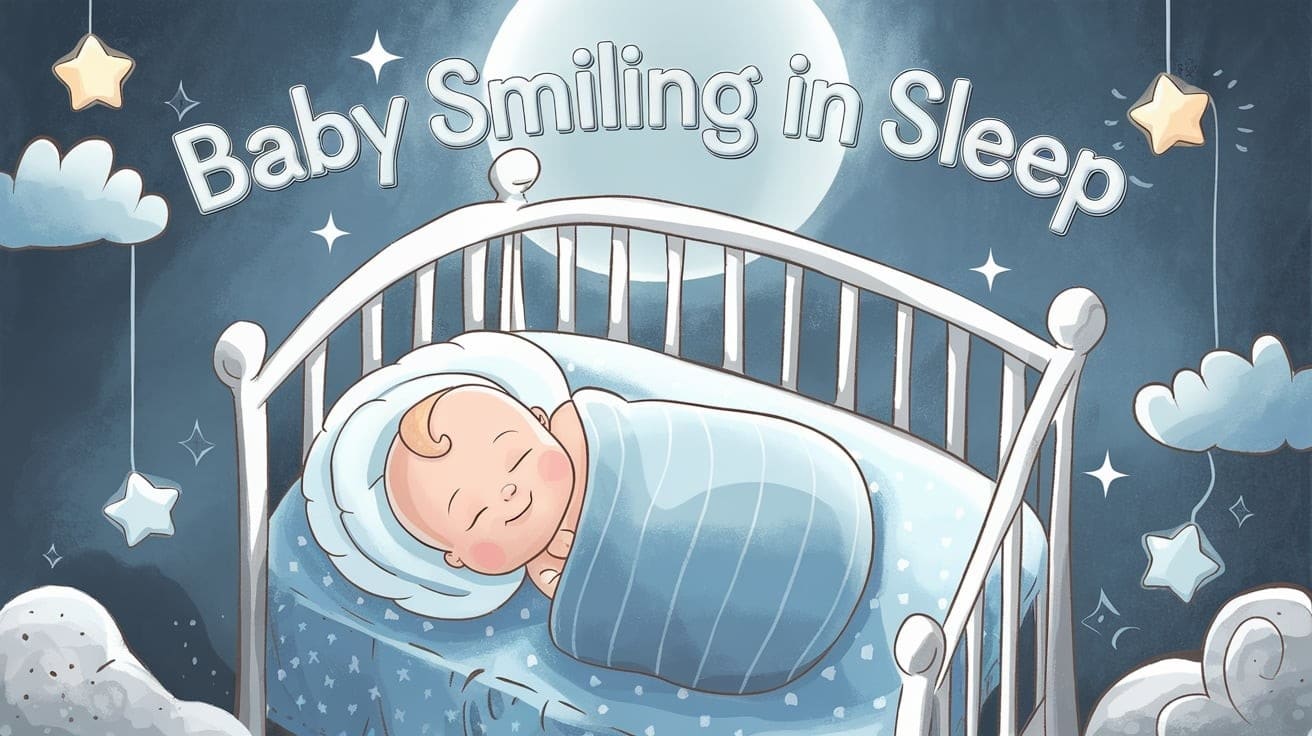
That tiny grin lighting up your baby’s face during sleep isn’t just adorable—it’s also quite mysterious! Parents worldwide catch these sweet moments and wonder what causes them.
These peaceful smiles appear when babies drift into their deepest sleep states, creating picture-perfect moments that prompt many questions.
Is your little one having pleasant dreams? Could it be gas? Perhaps it’s simply muscle development at work? Science offers several possible answers to this common phenomenon.
These nighttime grins begin appearing shortly after birth and continue throughout infancy, with each smile potentially signaling different things at various developmental stages.
Understanding what might be happening during these charming sleep expressions can help parents appreciate these fleeting moments even more—if they occur during afternoon naps or in the quiet hours of the night.
Why Do Babies Smile in Their Sleep?
Those sweet sleep smiles have scientific roots. Newborns display what doctors call reflex smiles—automatic facial movements unrelated to feelings or responses to outside stimuli.
These involuntary expressions occur randomly as their developing nervous systems fire signals to facial muscles during rest periods.
Around 6-8 weeks of age, babies begin showing social smiles—the responsive grins parents treasure when interacting with their little ones.
Unlike reflex smiles, these genuine expressions happen when babies are awake and engaged with caregivers.
Sleep smiles in older infants might connect to REM (Rapid Eye Movement) sleep when brain activity increases and babies process daily experiences. Some researchers suggest these expressions could reflect primitive emotion processing during rest.
Though we can’t know exactly what triggers each grin, both types serve important developmental purposes.
The random muscle movements of reflex smiles help babies practice facial control, while emotional expressions build crucial social bonds with caregivers.
What Does It Mean When A Baby Smiles in Sleep?
When babies grin during rest, they’re often in the REM sleep phase. This stage is linked to brain growth and processing of daily inputs.
These small facial movements may show mental growth happening below the surface. Scientists think these reactions might help form neural pathways needed for social skills.
Parents who notice these night-time grins get a peek into their child’s progress. These moments offer chances to bond with your little one while they rest.
While not fully understood, these expressions during sleep are normal and healthy signs. They show your baby’s brain is working even while resting.
Watch for these sweet moments—they’re short-lived yet tell a story about your child’s growth stage.
Is It Normal for My Baby to Smile in Their Sleep?
Yes, it’s completely normal for babies to smile during sleep. This happens during REM (Rapid Eye Movement) sleep when their brains are active and processing information.
These sweet smiles often start appearing within the first few weeks after birth. They’re involuntary reactions, not true social smiles yet.
When your little one smiles while sleeping, they might be responding to internal sensations or simply developing their facial muscles.
These sleep smiles happen before babies learn to smile in response to your face or voice. Enjoy these precious moments! They’re a natural part of your baby’s growth.
Baby Smiling in Sleep: Reflex or Emotion?
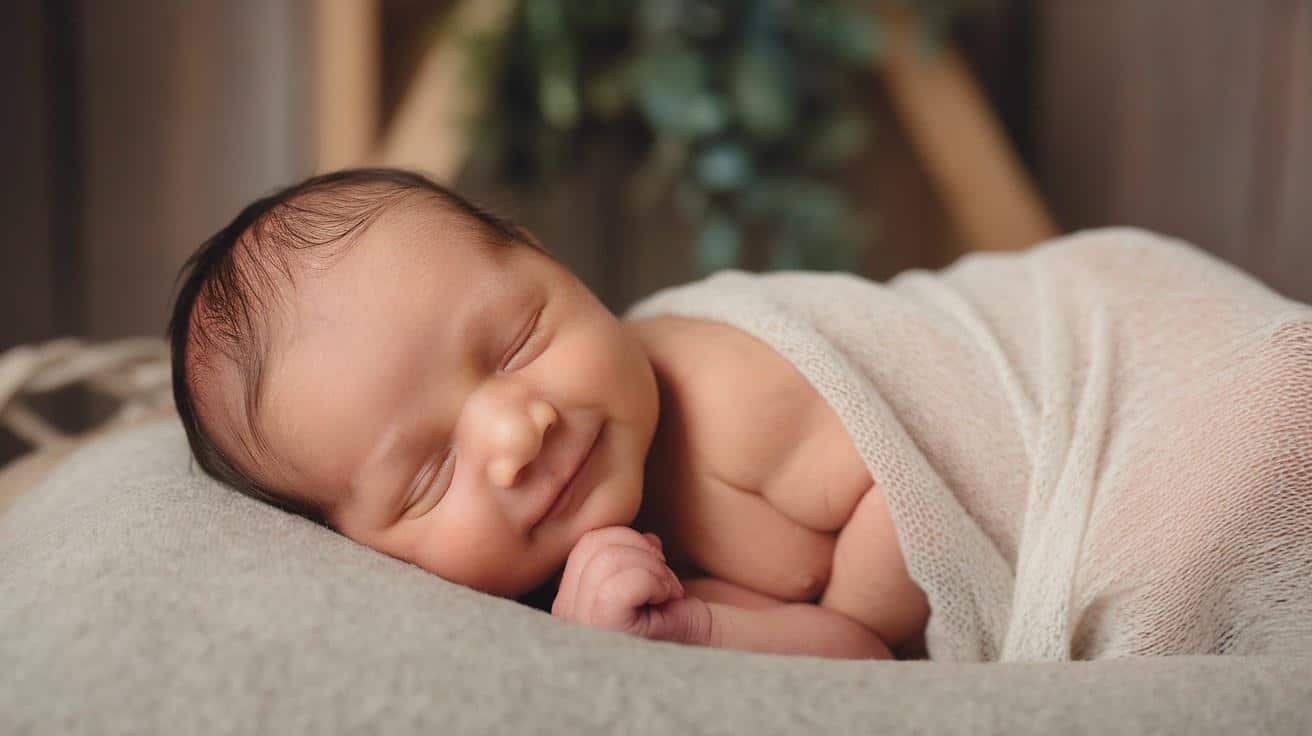
Babies smile during sleep starting from birth. These early smiles happen automatically, without conscious thought, similar to other natural responses in newborns.
Scientists note that these sleep smiles occur during the REM (Rapid Eye Movement) sleep phases. Most child doctors consider them unconnected to feelings of happiness.
True social smiles—those showing real joy—typically start appearing between 6 and 8 weeks of age. Parents can tell the difference, as these conscious smiles light up the whole face, including the eyes.
What looks like happiness during sleep is simply the baby’s developing nervous system at work.
Stages Baby Smiling in Sleep by Age
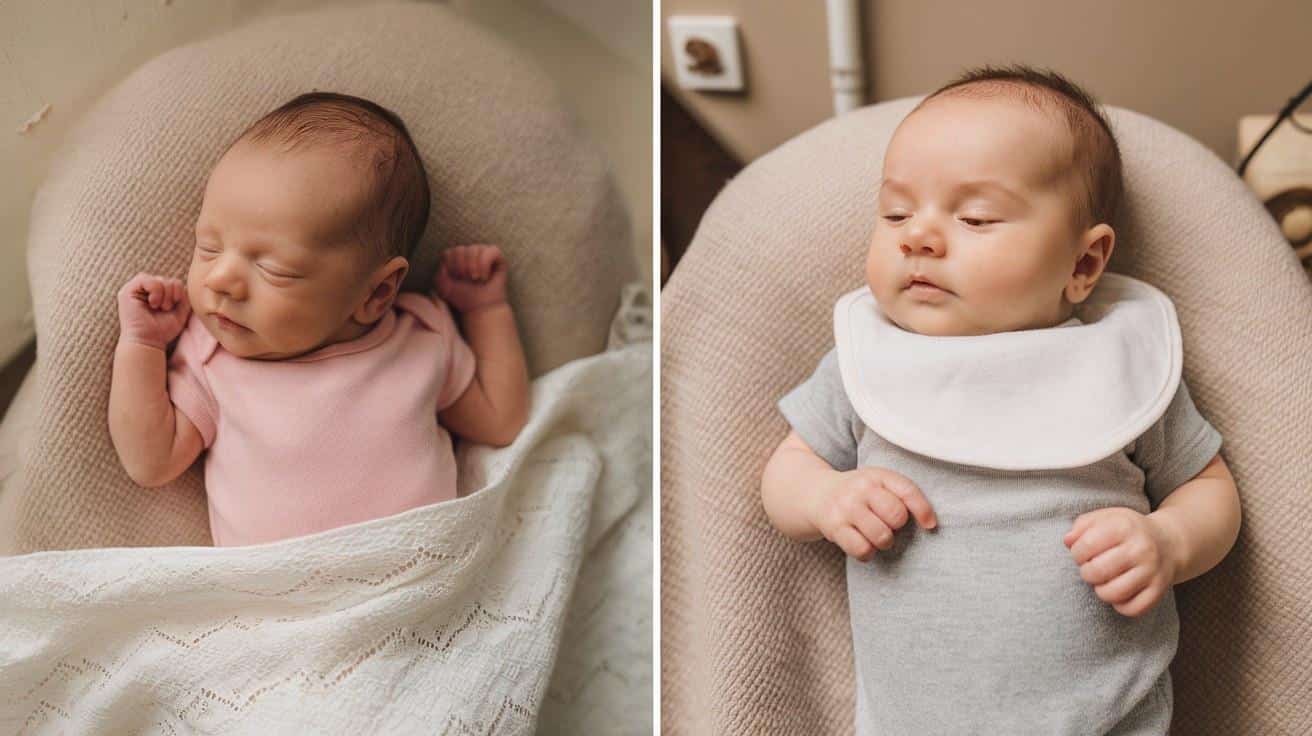
Babies show joy during sleep from their earliest days. In the first two months, little ones may display quick grins while resting, though these are often related to gas or natural reflexes.
1. Newborn (0-2 months)
During these initial weeks, babies often smile while sleeping due to involuntary muscle movements rather than true emotions. These reflexive grins typically appear suddenly and disappear just as quickly.
Parents might notice them most commonly after feeding sessions or during light sleep phases.
Though not emotionally driven, these small expressions still provide heartwarming glimpses of your baby’s developing facial capabilities.
Many parents enjoy watching for these fleeting moments during quiet observation times.
2. Between 2 to 6 months
This period marks the transition toward more meaningful sleep smiles. As their brains develop rapidly, babies begin connecting emotions with expressions.
Sleep smiles during this stage often coincide with active sleep cycles when babies process new information. Parents might notice longer-lasting grins and even soft giggles during dreams.
These reactions reflect growing emotional capacity and early memory formation. Smiles may increase after particularly stimulating or enjoyable days of family interaction.
3. After 6 months
By this stage, babies smile with greater purpose during sleep, reflecting more complex dreams and emotional processing. These expressions often mirror their wakeful personality traits and reactions to favorite activities or people.
Sleep smiles now frequently occur during REM (Rapid Eye Movement) sleep cycles when the brain actively creates and strengthens neural pathways. Many parents report that specific daytime experiences seem to trigger corresponding nighttime smiles.
These sleep expressions provide fascinating insights into how babies integrate and process their expanding world.
Common Myths About Babies Smiling in Sleep
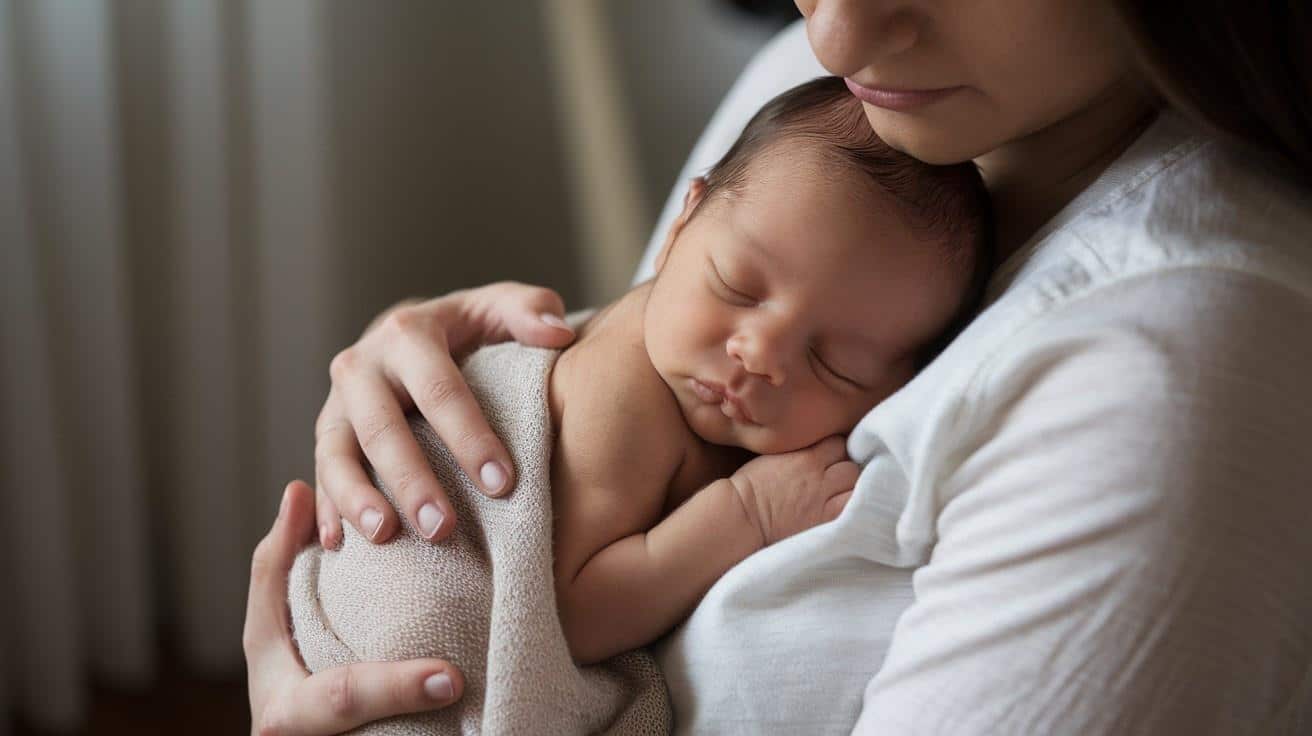
Many parents wonder about their babies’ sleep smiles. Some believe these grins indicate gas, but research shows they’re often natural sleep movements.
Babies smile during REM (Rapid Eye Movement) sleep as their brains process daily information. These expressions help with facial muscle growth and emotional bonding.
Scientists found that newborns start smiling during sleep within weeks after birth. These early expressions occur before social smiles at 6-8 weeks.
Parents can enjoy these quiet moments without worry. Sleep smiles are normal, healthy signs of development, and there are no signs of discomfort or worry.
When Should You Worry?
Baby smiles during sleep are typically normal brain development signs. Most sleep smiles happen during REM sleep when brain activity increases.
Parents should note the timing, frequency, and other behaviors associated with sleep smiles.
Contact your doctor if sleep smiles cause unusual body movements, skin color changes, or breathing issues. Also, seek medical advice if you cry excessively after smiling episodes or if smiles seem like grimaces of pain.
Regular sleep smiles without other symptoms are rarely cause for concern. They’re simply part of your baby’s healthy growth and neural progress.
Capturing Precious Moments: Tips for Parents
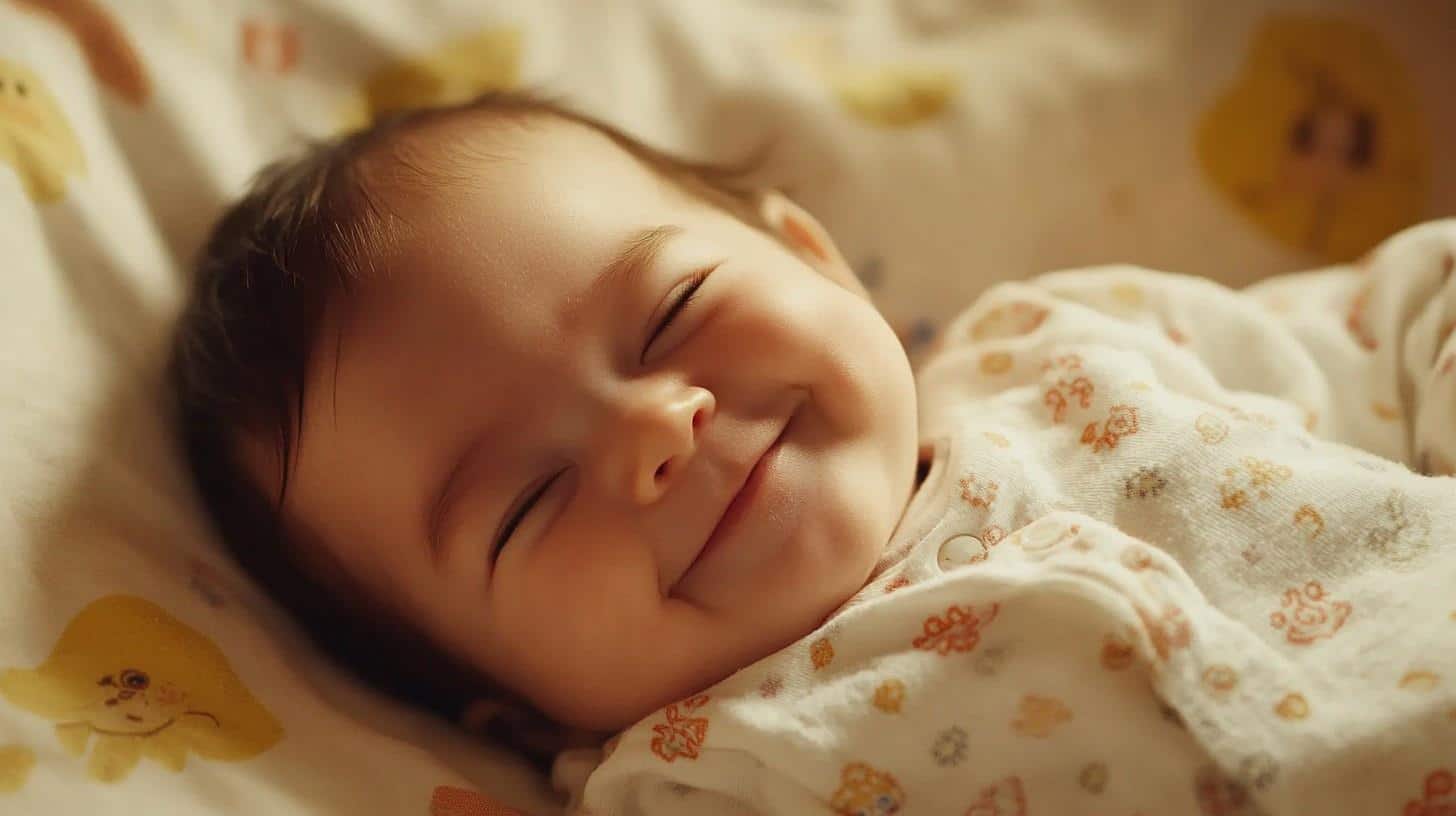
Record your baby’s sleeping smile with soft lighting and your phone camera on silent mode. Try taking photos every few seconds to catch that perfect expression.
Creating a Photography Routine
Create lasting mementos with handprint clay ornaments or monthly photo collections. For best results, use a white sheet as a simple backdrop and natural light.
Consider setting a consistent time each week for photo sessions when your baby tends to be most content.
Morning light often provides the most flattering illumination for baby portraits without harsh shadows. Many parents find success with simple props like seasonal items or cherished toys to mark the passage of time.
Remember to capture details like tiny hands and feet, as these change remarkably fast during the first year.
Preserving Everyday Magic
Document everyday routines—these ordinary moments become extraordinary memories.
Remember, the best photos happen when you’re simply present, camera-ready, and not forcing the moment. Bath time, feeding sessions, and play periods offer authentic opportunities to capture your baby’s personality.
Keep your phone or camera easily accessible in common areas of your home to catch lucky moments.
Try to include parents and siblings in some photos to show relationships forming. These candid images often become more valuable than posed portraits as years pass and details of daily life fade from memory.
Special Tip: Set aside five minutes daily with no distractions to observe and connect with your baby before taking photos.
Final Words
Parents often miss the small details during their child’s growth. These quick years pass before we notice. Children develop new skills daily, shifting from crawling to running in what feels like mere days.
Taking photos helps preserve these times, but being present matters more. Put down devices occasionally to witness their progress fully.
Make simple traditions that create lasting memories. These don’t require elaborate planning or expense.
Remember that challenges are temporary, while the bond you build remains. Even difficult phases contribute to your shared story.
Trust your instincts rather than compare your experience to others. Your unique connection with your child will guide you forward.
